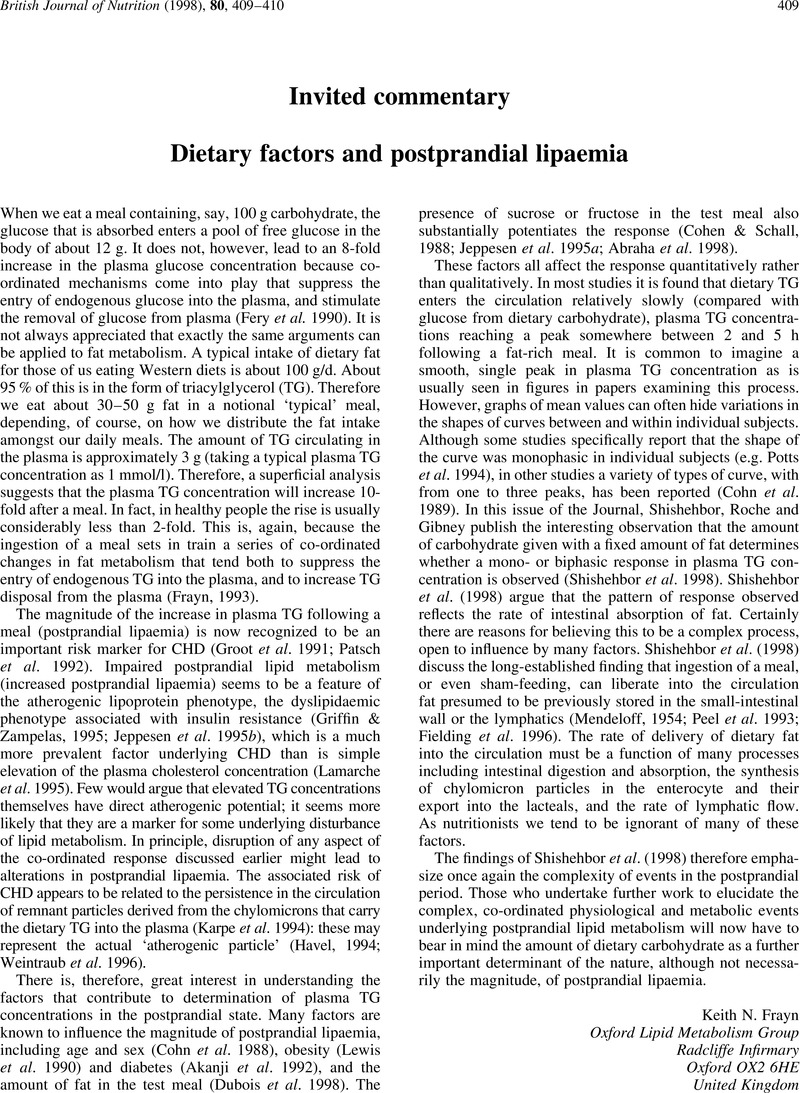Crossref Citations
This article has been cited by the following publications. This list is generated based on data provided by Crossref.
Orth, Matthias
Weinland-Wilken, Christian
Westphal, Sabine
and
Luley, Claus
2001.
An improved method for the rapid assessment of persisting chylomicron remnant concentrations.
Clinical Biochemistry,
Vol. 34,
Issue. 5,
p.
387.
Frayn, Keith N
2001.
Effects of fat on carbohydrate absorption: more is not necessarily better.
British Journal of Nutrition,
Vol. 86,
Issue. 1,
p.
1.
Robertson, M Denise
Mason, Andrew O
and
Frayn, Keith N
2002.
Timing of vagal stimulation affects postprandial lipid metabolism in humans,,.
The American Journal of Clinical Nutrition,
Vol. 76,
Issue. 1,
p.
71.
Daly, Mark
2003.
Sugars, insulin sensitivity, and the postprandial state.
The American Journal of Clinical Nutrition,
Vol. 78,
Issue. 4,
p.
865S.
Costabile, Giuseppina
Salamone, Dominic
Della Pepa, Giuseppe
Vitale, Marilena
Testa, Roberta
Cipriano, Paola
Scidà, Giuseppe
Rivellese, Angela Albarosa
Annuzzi, Giovanni
and
Bozzetto, Lutgarda
2024.
Differential Effects of Two Isocaloric Healthy Diets on Postprandial Lipid Responses in Individuals with Type 2 Diabetes.
Nutrients,
Vol. 16,
Issue. 3,
p.
333.



